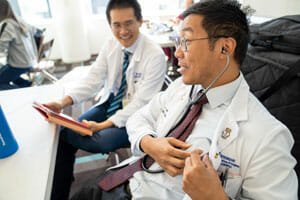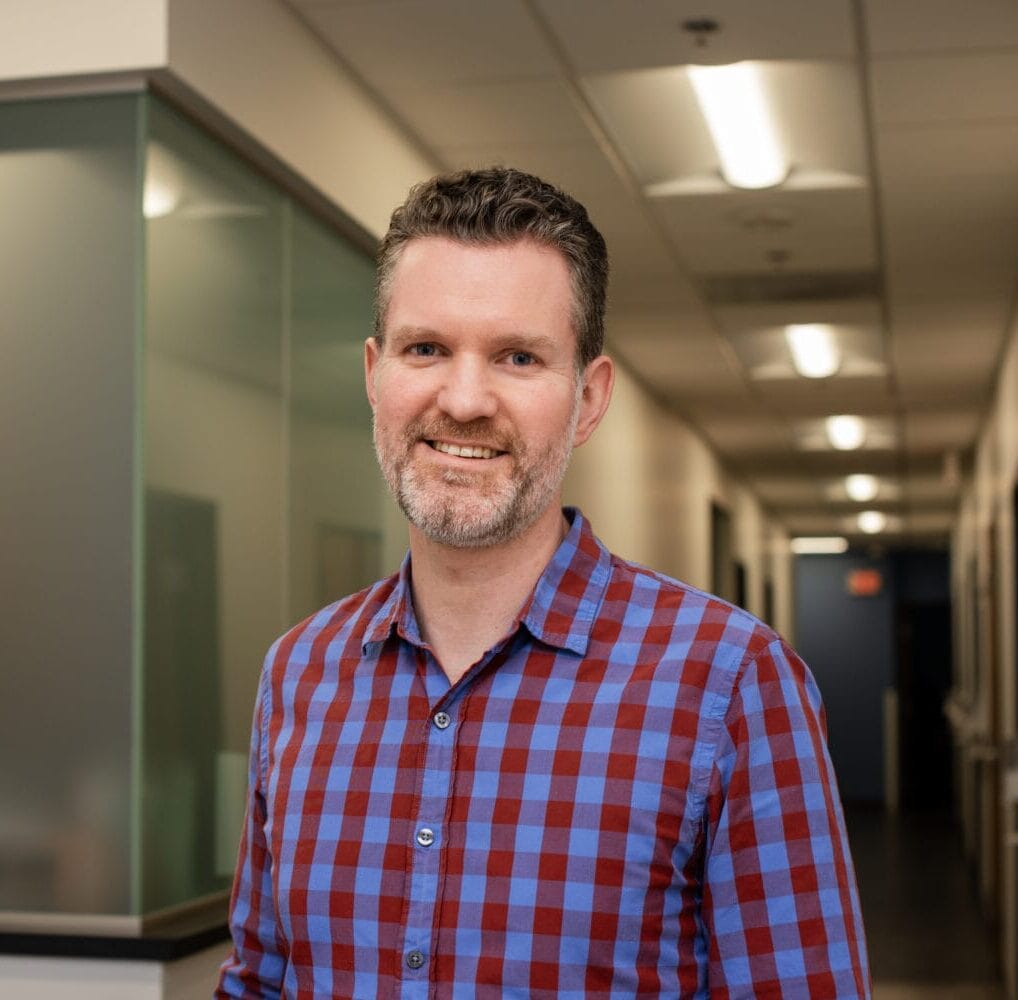Innovation at the forefront of WesternU’s future

Western University of Health Sciences held Innovation Day Oct. 29, 2019 to showcase the many roles innovation and technology play in educating the next generation of health care providers.
The event, organized by WesternU’s Center for Innovation, featured hands-on learning opportunities and presentations by WesternU administrators and representatives of companies working with the University on a range of projects.
“Our job is to use innovation to motivate ourselves and our students to value it, to contribute to it, and to always ask the critical questions. How does this make me a better provider? How does it make us better educators?” said WesternU Senior Vice President and Provost David Baron, DO, MSEd. “We can all feel proud that our University has made the commitment to this. Not to take away from our core mission, but to add to it. To contribute to it. To say that we’re proud at WesternU on how we’re using innovation to help our students become better providers.”
Deans from the colleges of dental medicine, graduate nursing, optometry, health sciences and veterinary medicine talked about how each college has embraced innovation in collaborative and unique ways. Pomona Vice Mayor Victor Preciado presented a city proclamation to the Center for Innovation.
“We congratulate the Center for Innovation on a successful Innovation Day 2019,” Preciado said. “We are proud to have such a renowned organization in Pomona and we commend you for your outstanding leadership in innovation, entrepreneurship and education in the field of medicine. We wish you and your impressive staff and students the best in all your future endeavors.”
“How we can integrate the research activities and expertise of our faculty in such a manner that we can realize the potential of the intelligence and the brilliance of our faculty and develop a collaborative, multidisciplinary research program. That is what my initiative is,” Agrawal said. “I’m trying to identify the expertise and the different resources, and then bring them together in a multi-disciplinary manner.”
His office has created research clusters that will meet regularly to share resources and ideas.
Senior Vice President and Chief Operating Officer Clive Houston-Brown, EdD, said a critical aspect of supporting innovation is facilitating connectivity into action and collaboration.
“If you are going to have innovation you must have that human element. You must have the ability to interact with one another,” he said. “As we design a conference room that used to be just a table and chairs, we now infuse it with a lot of technology to make sure that collaboration can go on not just in that room but elsewhere across the world. So when we have partnerships in places like Ireland we have the ability to communicate across the waters.”
A panel discussion on artificial intelligence (AI) featured experts from Southwest Research Institute and ElectrifAI.
“We obviously are a big believer in the future of AI as it relates to health care,” said WesternU Chief Innovation Officer Nicholas Webb. “If you think about the challenges we have in health care, they are to deliver a lot more health care much more quickly and more accurately. So when you’re looking at lots of data and you’re trying to have accurate outcomes from that data, and you want to increase speed, really the best way to do that is to have the machine do the heavy lifting.”
Shahin Rahman, vice president of data science at ElectrifAI, said his company is working with medical schools on admissions. The goal is not to replace the admissions committee or admissions process, but to use AI to empower those entities in a way that will benefit both the institution and the students.
How are students best matched to a particular university so that both the institution and the student are successful as possible? Trying to predict a result that is four or five years in the future is difficult. Traditionally, universities have looked at standardized test scores and grade point average, but is this enough? Rahman said.
“Can we do better? Can we empower that admissions committee so they can spend time and attention on relevant information rather than get overloaded by a flood of information?” he said. “That’s where we try to bring a more streamlined process and to bring some level of consistency into that process, and we want to go beyond just the standardized exams, or GPA. Reading through thousands of essays, that is time consuming. Can we extract key information from the essay that will be predictive of the student’s fitness to the program that the institution provides?”
David Chambers, principal engineer at Southwest Research Institute, said his company’s markerless motion capture can identify joint locations and estimate their poses from a single camera.
“The really cool thing about this, outside of high-performance athletics, (is that) we can do these for medical studies as well,” Chambers said. “There is a lot of correlation with gait. There is correlation of injury with the way you recover. There is a lot that can come out of this data. It’s very information-rich, and it’s something that we have been applying specifically looking at gait analysis for predicting dementia earlier than other predictors.”
Innovation Day also provided hands-on activities that promoted teamwork, problem solving and design thinking. The first session of the Cupcake-A-Thon was won by first-year College of Podiatric Medicine students Katherine Gutierrez and Nesem Mergen and WesternU guest Nadia Jam. The challenge was to design a bridge using cupcakes, Rice Krispies treats and other materials. Their team decided to use Rice Krispies treats as the foundation and build from there, Gutierrez said.
“We really like working with our hands,” she said. “It’s fun to be able to do something hands-on.”
She also enjoyed learning more about innovation at WesternU.
“I’m excited about the technological advances we are making that are being put into practice,” Gutierrez said. “Part of lifelong learning as doctors is to be able to keep up with technology and serve the public.”
“What I hope participants walk away with is expanding their knowledge on the tenets of design thinking and empowering them to grow a larger capacity to be creative in the way they approach problems,” Barnes said.
“It was interesting to see all the technology being developed and what other new things that could come out from this,” said third-year COMP student Elenie Philippas, who participated in the iSquad activity. “I want to go into family medicine, so I think that all these new technologies can help in the clinic, especially if you are in a rural area and doing family medicine where you don’t have available professionals like specialists.”



